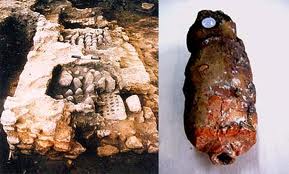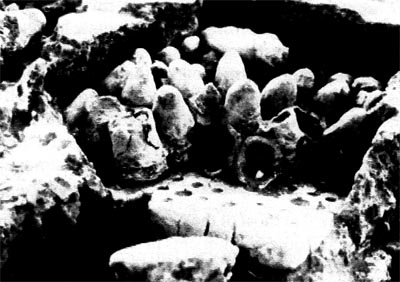
Zinc is a very interesting metal and was responsible for the innovation of utensils of mock silver and coins of mock gold. Because of the low boiling point (907°C) zinc is difficult to smelt. Brass (an alloy of copper and zinc) however is known from even 3rd Millennium BC in China, but brass can be produced from naturally occurring minerals containing zinc and copper. Pure zinc could be produced only after the mastery of distillation techniques, which have been described in our ancient chemical treatises. The mines of Rajasthan have given definite evidence of zinc production going back to 6th Century BC. Distillation process however was being used only from the 12th century AD, thus India is the first to produce zinc by distillation processes.
We are sure that the following story of early zinc production and lead about the ancient Indian chemists and metallurgists will be of interest to the students of history of science and technology.
Zinc is silvery white in colour, hard and brittle owing to its closely packed hexagonal crystal structure. In the 17th and 18th century Germans called this metal ‘Caunterfeitum’ or mock-silver because of its silvery white lusture. Its boiling point is 907°C. The main minerals of zinc in nature are calamine and sphalerite and mostly these occur in combination with the minerals of copper, lead, silver and iron. There is confusion about early occurrence of zinc and its extraction by the distillation process. The regular zinc production by distillation started in India around 12th century AD and in China it is not earlier then 16th century AD. As early as the 12th century AD, India produced the metallic zinc by the sophisticated distillation process at Zawar in Rajasthan.

This technology of zinc manufacture is also described in several Indian alchemical works of the medieval period including the 13th century Rasa Ratna Samuccaya. The word used in this document to describe the distillation process involved is tirakpatnayantra, which translated literally, means “distillation by descending”. Various zinc-smelting processes were also described in the Sanskrit works of medicinal chemistry and alchemy, viz., Rasarnavam Rastantram (500-100 BC), Rasratnakar (2nd century AD) and Rasprakash Sudhakar (12th century AD). In China zinc was first reported in the 16th century by the excavation in Gui-Zhan region of Yun-han, but the new research by the Chinese scholars gives a clear indication that zinc smelting began in China in the Jiajung period (1552-1566 AD) of the Ming dynasty. In 17th century China exported zinc to Europe under the name of totamu or tutenag. Tutenag possibly has its origin in the word Tutthanagaa meaning zinc in South Indian languages.
~By D.P. Agrawal & Lalit Tiwari











